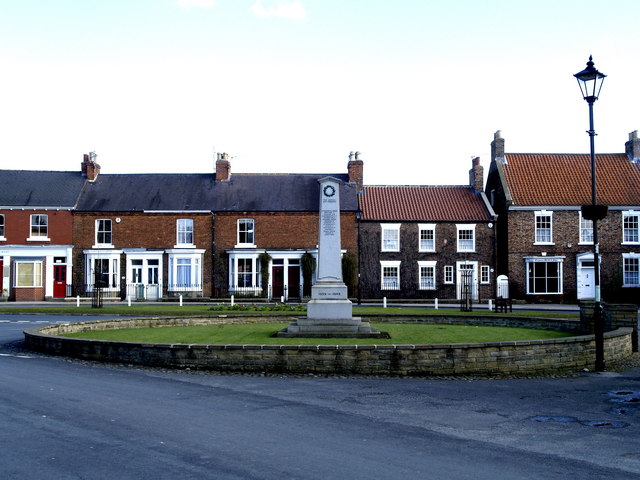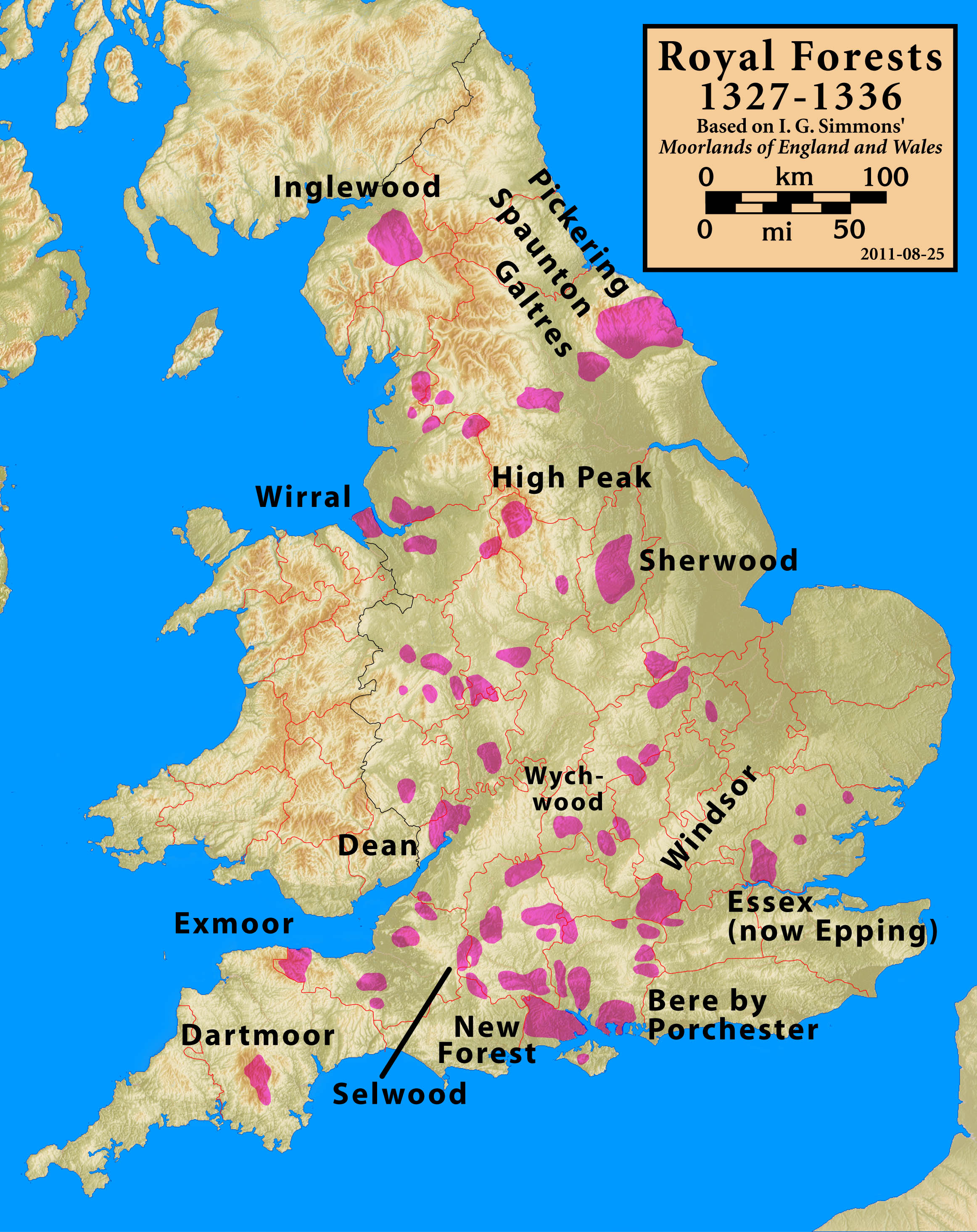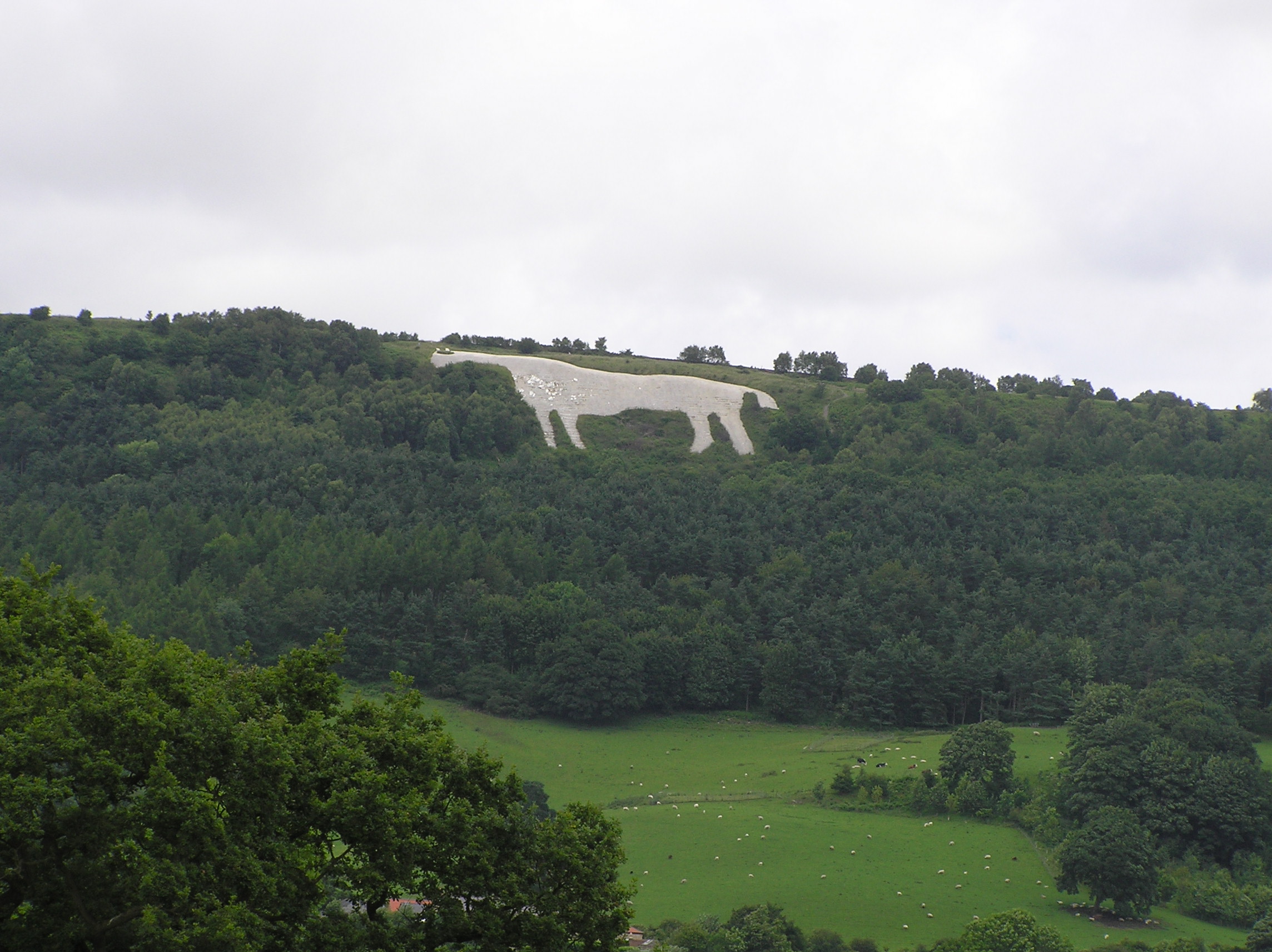|
Easingwold
Easingwold is a market town, electoral ward and civil parish in the Hambleton District in North Yorkshire, England. Historically, part of the North Riding of Yorkshire, it had a population of 4,233 at the 2001 census, increasing to 4,627 at the 2011 Census. It is located about north of York, at the foot of the Howardian Hills. History The town is mentioned in the Domesday Book of 1086 as "Eisicewalt" in the Bulford hundred. At the time of the Norman conquest, the manor was owned by Earl Morcar, but subsequently passed to the King. In 1265 the manor was passed to Edmund Crouchback by his father, Henry III. The manor was caught up in the dispute between the 2nd Earl of Lancaster and Edward I and the manor passed back to the crown following the Battle of Boroughbridge in 1322 which resulted in the execution of the Earl at Pontefract. The manor was restored to the Earl's brother some six years later, but he left no male heir, so the lands passed to his son-in-law, John of Gaunt ... [...More Info...] [...Related Items...] OR: [Wikipedia] [Google] [Baidu] |
Easingwold Town Hall
Easingwold Town Hall is a municipal building in the Market Place in Easingwold, North Yorkshire, England. The structure was used as an events venue and is now used as a commercial printing centre. History In the mid-19th century, a group of local businessmen decided to form a company to raise funds for the erection of an events venue in the town: the site they selected was occupied by a Slaughterhouse, shambles, which had been the local place for meat trading. The new building was designed by Edward Taylor in the Victorian architecture, Victorian style, built in red and buff bricks at a cost of £1,423 and was officially opened on 31 March 1864. The design involved a symmetrical main frontage with three bays facing the south edge of the Market Place; the central bay featured a wide arched opening on the ground floor and three tall round headed windows on the first floor. The windows on the first floor were framed by a brick arch and surmounted by a gable containing an Oculus (ar ... [...More Info...] [...Related Items...] OR: [Wikipedia] [Google] [Baidu] |
Forest Of Galtres
The royal Forest of Galtres was established by the Norman kings of England in North Yorkshire, to the north of the Ancient City of York, extending right to its very walls. The main settlement within the royal forest was the market village of Easingwold, but in 1316 the forest comprised 60 villages in 100,000 acres. The Forest of Galtres was intimately connected with York: Davygate in the city was the site of the forest court and prison, a royal liberty within the city of York; Davygate, from which the forest was administered, commemorates David Le Lardiner, whose father, John the Lardiner, was the Royal Lardiner (steward of the larder, in this case providing venison as well as "tame beasts") for the Forest of Galtres, a title which became hereditary in the family. During the reign of Henry II, the Forest stood at its greatest extent, but by the fifteenth century, concerns were being voiced over the extent of deforestation. Aside from the kings' pleasure in deer hunting, th ... [...More Info...] [...Related Items...] OR: [Wikipedia] [Google] [Baidu] |
Hambleton District
Hambleton is a local government district in North Yorkshire, England. The administrative centre is Northallerton, and the district includes the outlying towns and villages of Bedale, Thirsk, Great Ayton, Stokesley, and Easingwold. The district was formed by the Local Government Act 1972 on 1 April 1974, as a merger of Northallerton Urban District, Bedale Rural District, Easingwold Rural District, Northallerton Rural District, and parts of Thirsk Rural District, Stokesley Rural District and Croft Rural District, all in the North Riding of Yorkshire. Geography Hambleton covers an area of 1,311.17 km² most of which, 1,254.90 km², is green space. The district is named after the Hambleton Hills, part of the North York Moors National Park, on the eastern edge of the district. This area is the subject of a national habitat protection scheme as articulated in the United Kingdom's Biodiversity Action Plan. About 75% of the district lies in the Vales of Mowbray and of ... [...More Info...] [...Related Items...] OR: [Wikipedia] [Google] [Baidu] |
North Yorkshire
North Yorkshire is the largest ceremonial counties of England, ceremonial county (lieutenancy area) in England, covering an area of . Around 40% of the county is covered by National parks of the United Kingdom, national parks, including most of the Yorkshire Dales and the North York Moors. It is one of four counties in England to hold the name Yorkshire; the three other counties are the East Riding of Yorkshire, South Yorkshire and West Yorkshire. North Yorkshire may also refer to a non-metropolitan county, which covers most of the ceremonial county's area () and population (a mid-2016 estimate by the Office for National Statistics, ONS of 602,300), and is administered by North Yorkshire County Council. The non-metropolitan county does not include four areas of the ceremonial county: the City of York, Middlesbrough, Redcar and Cleveland and the southern part of the Borough of Stockton-on-Tees, which are all administered by Unitary authorities of England, unitary authorities. ... [...More Info...] [...Related Items...] OR: [Wikipedia] [Google] [Baidu] |
Thirsk And Malton (UK Parliament Constituency)
Thirsk and Malton is a constituency in North Yorkshire represented in the House of Commons of the UK Parliament since 2015 by Kevin Hollinrake, a Conservative. History 2010-date Anne McIntosh, a Conservative, elected for Vale of York in 1997 then in Thirsk and Malton in 2010, having defeated fellow MP John Greenway in the selection, qualified as an advocate and worked for six years as political adviser to the European Democrats group in Brussels, then won election as an MEP for two terms, since 2010 she chaired the Environment, Food and Rural Affairs Select Committee. In 2014 she was deselected as the Conservative candidate. In 2015, Kevin Hollinrake was elected as MP. Political history Traditionally a safe Conservative seat, the main forerunner, Ryedale (abolished in 2010) was taken by Elizabeth Shields for the Liberal Party, following a by-election in 1986, held following the death of MP John Spence, and she held it for one year until the 1987 general election. Thi ... [...More Info...] [...Related Items...] OR: [Wikipedia] [Google] [Baidu] |
North Riding Of Yorkshire
The North Riding of Yorkshire is a subdivision of Yorkshire, England, alongside York, the East Riding and West Riding. The riding's highest point is at Mickle Fell with 2,585 ft (788 metres). From the Restoration it was used as a lieutenancy area, having been previously part of the Yorkshire lieutenancy. Each riding was treated as a county for many purposes, such as quarter sessions. An administrative county, based on the riding, was created with a county council in 1889 under the Local Government Act 1888. In 1974 both the administrative county and the North Riding of Yorkshire lieutenancy were abolished, replaced in most of the riding by the non-metropolitan county and lieutenancy of North Yorkshire. History Archives from 1808 record that the "north-riding of York-shire" had once consisted of "fifty-one lordships" owned by Robert the Bruce. During the English Civil War, the North Riding predominantly supported the royalist cause, while other areas of York ... [...More Info...] [...Related Items...] OR: [Wikipedia] [Google] [Baidu] |
Charles I Of England
Charles I (19 November 1600 – 30 January 1649) was King of England, Scotland, and Ireland from 27 March 1625 until Execution of Charles I, his execution in 1649. He was born into the House of Stuart as the second son of King James VI of Scotland, but after his father inherited the English throne in 1603, he moved to England, where he spent much of the rest of his life. He became heir apparent to the kingdoms of England, Scotland, and Ireland in 1612 upon the death of his elder brother, Henry Frederick, Prince of Wales. An unsuccessful and unpopular attempt to marry him to the Spanish Habsburg princess Maria Anna of Spain, Maria Anna culminated in an eight-month visit to Spain in 1623 that demonstrated the futility of the marriage negotiation. Two years later, he married the House of Bourbon, Bourbon princess Henrietta Maria of France. After his 1625 succession, Charles quarrelled with the Parliament of England, English Parliament, which sought to curb his royal prerogati ... [...More Info...] [...Related Items...] OR: [Wikipedia] [Google] [Baidu] |
Bullring
A bullring is an arena where bullfighting is performed. Bullrings are often associated with the Iberian Peninsula, but they can also be found through Iberian America and in a few Spanish and Portuguese ex-colonies in Africa. Bullrings are often historic and culturally significant centres that bear many structural similarities to the Ancient Rome, Roman amphitheatre. Common structure The classic bullring is an enclosed, roughly circular amphitheatre with tiered rows of stands that surround an open central space. The open space forms the arena or ''ruedo'', a field of densely packed crushed rock (''albero'') that is the stage for the bullfight. Also on the ground level, the central arena is surrounded by a staging area where the bullfighters prepare and take refuge, called the ''callejón'' (alley). The ''callejón'' is separated from the arena by a wall or other structure, usually made of wood and roughly 140 cm high. The partition wall has doors for the entrance and e ... [...More Info...] [...Related Items...] OR: [Wikipedia] [Google] [Baidu] |
Battle Of Boroughbridge
The Battle of Boroughbridge was fought on 16 March 1322 in England between a group of rebellious barons and the forces of King Edward II, near Boroughbridge, north-west of York. The culmination of a long period of antagonism between the King and Thomas, Earl of Lancaster, his most powerful subject, it resulted in Lancaster's defeat and execution. This allowed Edward to re-establish royal authority and hold on to power for almost five more years. Though not a part of the Wars of Scottish Independence, the battle is significant for its employment of tactics learned in the Scottish wars in a domestic, English conflict. Both the extensive use of foot soldiers rather than cavalry and the heavy impact caused by the longbow represented significant steps in military developments. Background Edward II was a weak and ineffectual king (made to look the more so by comparison with his father and son, Edward I and Edward III), and his reign was marked by military failure and internal strife ... [...More Info...] [...Related Items...] OR: [Wikipedia] [Google] [Baidu] |
Poor Law Amendment Act 1834
The ''Poor Law Amendment Act 1834'' (PLAA) known widely as the New Poor Law, was an Act of the Parliament of the United Kingdom passed by the Whig government of Earl Grey. It completely replaced earlier legislation based on the ''Poor Relief Act 1601'' and attempted to fundamentally change the poverty relief system in England and Wales (similar changes were made to the poor law for Scotland in 1845). It resulted from the 1832 Royal Commission into the Operation of the Poor Laws, which included Edwin Chadwick, John Bird Sumner and Nassau William Senior. Chadwick was dissatisfied with the law that resulted from his report. The Act was passed two years after the ''Representation of the People Act 1832'' extended the franchise to middle class men. Some historians have argued that this was a major factor in the PLAA being passed. The Act has been described as "the classic example of the fundamental Whig- Benthamite reforming legislation of the period". Its theoretical basis was ... [...More Info...] [...Related Items...] OR: [Wikipedia] [Google] [Baidu] |
John Of England
John (24 December 1166 – 19 October 1216) was King of England from 1199 until his death in 1216. He lost the Duchy of Normandy and most of his other French lands to King Philip II of France, resulting in the collapse of the Angevin Empire and contributing to the subsequent growth in power of the French Capetian dynasty during the 13th century. The baronial revolt at the end of John's reign led to the sealing of , a document considered an early step in the evolution of the constitution of the United Kingdom. John was the youngest of the four surviving sons of King Henry II of England and Duchess Eleanor of Aquitaine. He was nicknamed John Lackland because he was not expected to inherit significant lands. He became Henry's favourite child following the failed revolt of 1173–1174 by his brothers Henry the Young King, Richard, and Geoffrey against the King. John was appointed Lord of Ireland in 1177 and given lands in England and on the continent. He unsuccessfully att ... [...More Info...] [...Related Items...] OR: [Wikipedia] [Google] [Baidu] |
Old English Language
Old English (, ), or Anglo-Saxon, is the earliest recorded form of the English language, spoken in England and southern and eastern Scotland in the early Middle Ages. It was brought to Great Britain by Anglo-Saxon settlers in the mid-5th century, and the first Old English literary works date from the mid-7th century. After the Norman conquest of 1066, English was replaced, for a time, by Anglo-Norman (a relative of French) as the language of the upper classes. This is regarded as marking the end of the Old English era, since during this period the English language was heavily influenced by Anglo-Norman, developing into a phase known now as Middle English in England and Early Scots in Scotland. Old English developed from a set of Anglo-Frisian or Ingvaeonic dialects originally spoken by Germanic tribes traditionally known as the Angles, Saxons and Jutes. As the Germanic settlers became dominant in England, their language replaced the languages of Roman Britain: Common Br ... [...More Info...] [...Related Items...] OR: [Wikipedia] [Google] [Baidu] |








